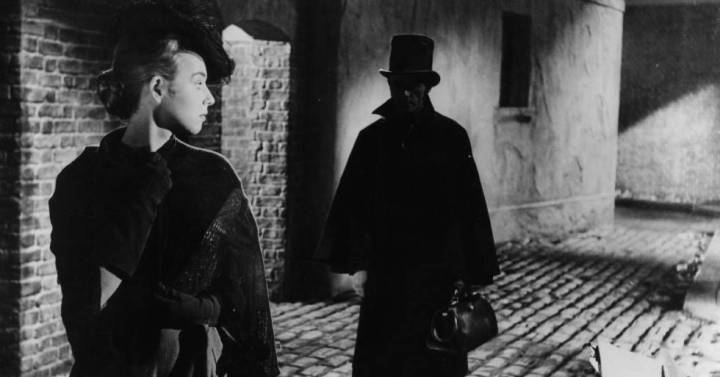About no murderer in history has been written as much as about Jack the Ripper.
Not in such an outlandish or conspiranoid way either.
How many women did he actually kill?
Who was?
Was there a single killer?
These are questions that go a long way, especially in that dark Whitechapel in London at the end of the 19th century.
That is why it is to be celebrated that, among the mountain of books published each year on the subject, two more than notable examples now reach Spanish bookstores.
The first one is a map, a small treasure chest.
A map?
Well, that and much more.
It's what the crazy people of Literary Adventures do.
Galdós's Madrid, Jane Austen's London, Lorca's Granada ... and my favorite, of which I have two copies, one for the wall and the other to consult the reverse, Sherlock Holmes's London.
Meticulous and scholarly works of which this
Jack the Ripper.
Black map.
London, 1888
is one of the best if not the best example.
MORE INFORMATION
The black genre gives everything for the autumn-winter season
As soon as we open it, we find the fold-out in which they tell the history of the art of Baritsu, the defense system with a cane used by Sherlock Holmes.
Only, as they explain, it is not a Japanese method nor is it called that.
It's all a Watson mistake.
Oh.
Very of the time, but only to warm up.
Then we have an architectural map of Greater London built after the fire of 1666. But the true story is in the 100x70 centimeter fold-out and the victims' notebook.
There are detailed suspects (almost 40 officers), the craziest theories, the analysis of the number of victims according to the investigator in question, the methods used in the autopsies.
Wait, number of victims?
Yes, because that's where the mess begins.
According to the canon, there are five, which we will talk about later.
There are doubts as to whether there are others afterwards and even some in between (some authors place other victims in September 1888 as part of the same series of murders, which occurred between August and November) and, for example, Michael Arntfield and Marcel Danesi include even six more in his, on the other hand, canonical
Murder in Plain English
, without forgetting various torsos without identifying one hundred percent.
Guilty?
Place your bets.
The authors do not go into analyzing, they only describe the existing theories, loaded in many cases with homophobia, anti-Semitism and the very classy, a whole cocktail of Victorian England.
The fantasies of the town, the urban legends and the business do the rest.
The victims
That is where you have to look, not to find the murderer, who knows, but to dignify them.
And it is what historian Hallie Rubenhold does with sobriety and overwhelming research work in
The Five Women
(Rocaeditorial).
Who really were Polly Nichols, Annie Eliza Smith, Elisabeth Ericsson, Kate Eddowes, and Mary Jane Kelly?
Historiography and journalism have been limited to repeating what was said at the time, based on rumors, exaggerations and inventions of "angry middle-aged men", as the author describes them.
But Rubenhold looks into the lives of each of the victims and rebuilds them.
And he tells us about the cruel asylum system of England at the time, the scourge of alcoholism, the prevailing misogyny or how a single woman was socially sinking.
Without that, you cannot understand the victims of Jack the Ripper and the impunity with which the murderer acted.
But, in addition, it focuses on women, on fascinating characters like Elisabeth Stride and her double life, her dual nationality, how a biography is constructed that is a story to try to escape depravity.
Or how Polly's husband loved her despite the separation and sank forever after her death.
And how Annie Chapman worked what she could to pay for alcoholism but was not a prostitute.
Because, surprise, only Mary Jane Kelly, who we know less about, practiced prostitution on a regular basis.
The rest are inventions of the press, which filled biographical gaps with total impunity.
As with
Läetitia or the End of Men
, by Ivan Jablonka (Anagrama), the author forgets the murderer, builds the case of each one with what little there is, without ever crossing the red lines, with an iron pulse.
A necessary work to know more about one of the most famous murderers in history but without bloody fantasies or unnecessary myths.


/cloudfront-eu-central-1.images.arcpublishing.com/prisa/E7H27O6535CYXH2WB2HOTJGJDU.jpg)





